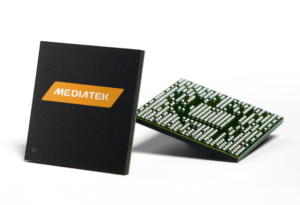
Last year, Taiwan Semiconductor Manufacturing Corporation (NYSE: TSM) began manufacturing chips using its then-new 10-nanometer chip manufacturing technology. TSMC’s 10-nanometer technology offered a significant reduction in chip area compared to its prior-generation 16-nanometer technology (area reductions are good). TSMC also claims that its 10-nanometer technology offers performance and power efficiency benefits relative to its 16-nanometer technology.
The main user of this technology is Apple (NASDAQ: AAPL), which put it to good use to manufacture the A10X Fusion chip that powers the latest iPad Pro tablets as well as the company’s iPhone 8 series and iPhone X smartphones. Other users of the technology included MediaTek (albeit its only 10-nanometer product basically bombed in the marketplace) and HiSilicon — but their shipment volumes pale in comparison to Apple’s.
On TSMC’s most recent earnings call, the company provided an update as to how well its 10-nanometer technology is doing in the marketplace as well as some insight as to how it’s expected to do during 2018.
Let’s dig into those details, shall we?
Q4 2017 and full-year 2017 performance
TSMC told investors that sales of 10-nanometer chips made up 25% of the company’s overall wafer revenue in the fourth quarter of 2017 and 10% of wafer revenue for the full year of 2017. It’s important to keep in mind that TSMC didn’t begin recognizing significant 10-nanometer revenue until the third quarter of 2017.
Additionally, co-CEO C.C. Wei told investors that “defect density and device performance are meeting [TSMC’s] targets.” By this, he’s indicating that chips manufactured on the technology are meeting specifications and that the yield rate (that is, the percentage of manufactured chips that ultimately meet specification) is in good shape (this is important for profit margins — yield rate and gross profit margin are positively correlated).
What’s most interesting, though, is that Wei said that TSMC expects that its sales of 10-nanometer chips will grow year over year in 2018 despite the fact that “most of [TSMC’s] current 10-nanometer mobile customers will start to migrate to 7-nanometer this year.”
That growth, Wei says, will be driven by “applications processor, cellular baseband, and [application specific integrated circuit] CPUs.”
A quick sanity check
It’s hard for those of us on the outside to know exactly what TSMC’s 10-nanometer design win pipeline looks like (for example, I don’t know of any major cellular baseband vendor that’s planning to use TSMC’s 10-nanometer technology), but even without such knowledge, it’s not hard to do a quick sanity check on TSMC’s claim that its 10-nanometer revenue will grow during 2018.
The reality is that TSMC didn’t see any significant 10-nanometer shipments during the first two quarters of 2017. By contrast, TSMC should see 10-nanometer revenue during all four quarters of 2018. Indeed, TSMC should still be shipping significant numbers of 10-nanometer wafers to Apple during the first half of 2018 since the iPhone 8 series and iPhone X phones, powered by TSMC 10-nanometer chips, will be the company’s workhorses during that time.

Also, even when Apple introduces its next-generation iPhones in the fall of 2018, it’s likely to continue to sell the iPhone 8 and iPhone 8 Plus (but not the iPhone X) for the remainder of 2018 and through most, if not all, of 2019.
So, while TSMC probably isn’t likely to see 10-nanometer chip shipments make up a quarter of its wafer revenue at any point during 2018 as it did in the final quarter of 2017, it’ll still ship quite a lot of 10-nanometer chips to Apple.
On top of that, Huawei is likely to incorporate its 10-nanometer Kirin 970 chip, which first debuted in the company’s Mate 10/Mate 10 Pro smartphones, in additional devices that’ll launch in the spring of 2018. Huawei’s high-end chip orders aren’t anywhere near as large as Apple’s, but this should definitely help.
The dynamics that I described with Apple and Huawei, coupled with the potential for other undisclosed chips built using TSMC’s 10-nanometer technology to come to market over the course of 2018, helps me have confidence in TSMC’s projection of continued 10-nanometer shipment growth this year.


